Melodies are the heart and soul of any track.
They can completely transform a song, creating the emotional foundation that keeps listeners hooked and bringing life to your tracks.
An epic melody can help your music sound dynamic, captivating, and unforgettable.
As producers, knowing what is melody and more advanced techniques like harmonizing, layering, and developing melodies can really up your game.
That’s why we’re breaking down everything you need to know to answer the question, what is melody, with tips you can apply directly to your songs, like:
- Pitch and its role in melody (+ other music theory essentials) ✓
- The impact of rhythm in melody ✓
- How intervals shape melodic lines ✓
- Vocal vs instrumental melodies ✓
- Stepwise motion vs leaps in melodies ✓
- Creating catchy melodies & how to identify melodies ✓
- The relationship between melody and harmony ✓
- Layering melodies in production ✓
- Different melodies (like countermelodies) ✓
- How to write melodies like a boss ✓
- Much more about what is melody ✓
After this article, you’ll know everything about melodies and how to use them to create standout tracks.
This way, you can build emotional, engaging music that sticks with listeners and always sounds polished and professional.
Plus, you’ll ensure your tracks are always cohesive, exciting, and show-stopping.
You’ll never have to ask yourself, what is melody again because you’ll be knocking them out like a true professional.
So, let’s dive in…
Table of Contents
- What is Melody: Breaking it Down
- Pitch: The Foundation of Melody
- Rhythm in Melody: Timing and Flow
- Intervals in Melody: The Space Between Notes
- Different Types of Melodies
- Melodic Motion: How Melodies Move
- How to Create Catchy Melodies
- Melodic Contour: Shape and Emotion
- The Relationship Between Melody and Harmony (+ Tips About What is Melody)
- What is Melody: Final Thoughts
What is Melody: Breaking it Down
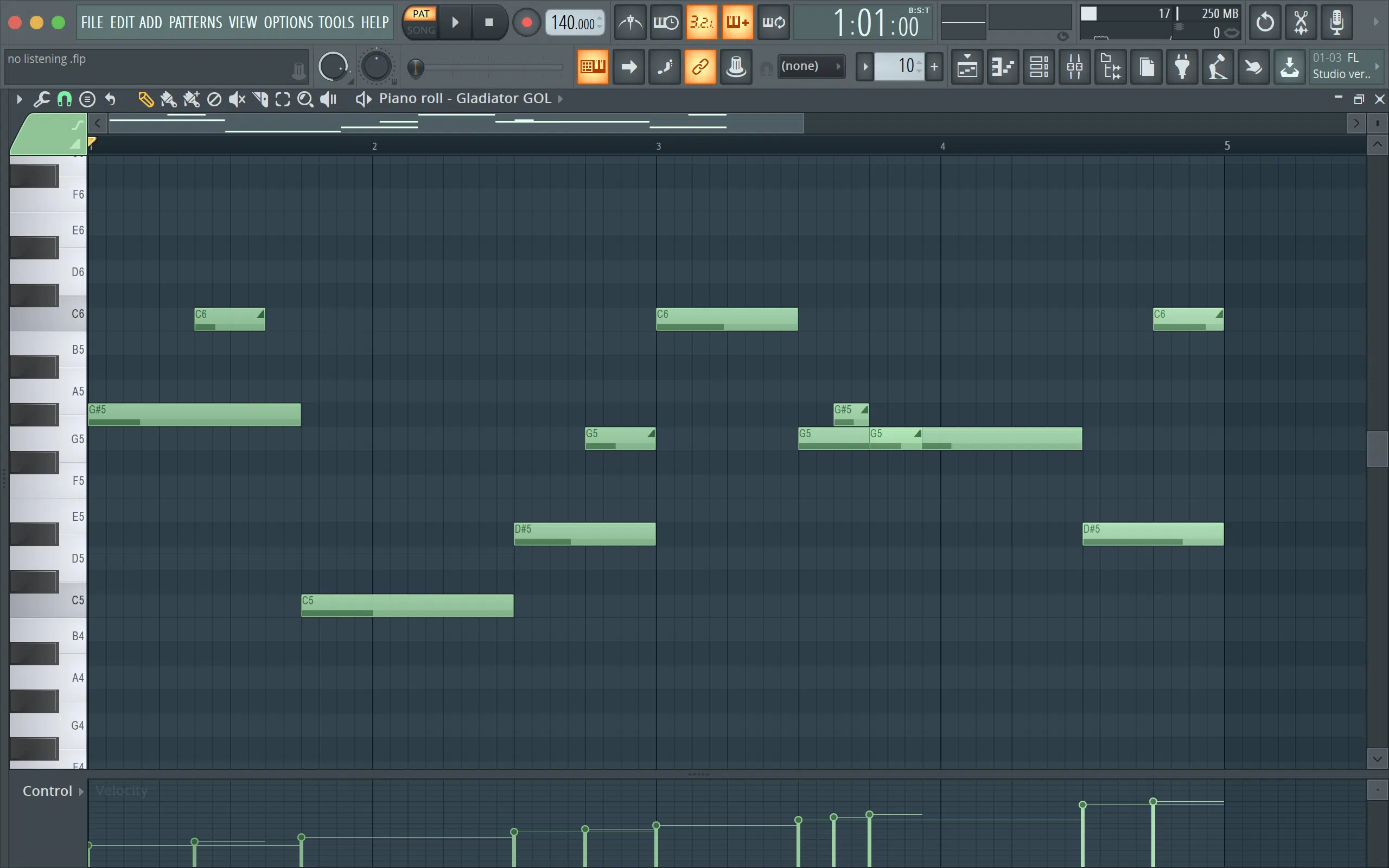
Melody is the heart of a song, the sequence of notes that forms the musical line you can hum or sing.
Think about your favorite songs, like the vocal melodies in a pop hit or the instrumental lead in a classical music; that’s the melody guiding the listener.
So, what is melody?… Well, in simple terms, melody is a combination of pitch and rhythm, creating a series of notes that form a recognizable musical phrase.
For example, if you’re working in a minor key and want to build a memorable melody, you might start with the pentatonic scale to keep things simple and catchy.
Whether it’s the top line in a pop song or a complex instrumental in a symphony, the melody in music is what sticks with listeners.
It’s driving the emotion and energy of the track.
We’ll be breaking everything you need to know so you never have to ask, ‘what is melody’ again, so let’s get into it.
Pitch: The Foundation of Melody
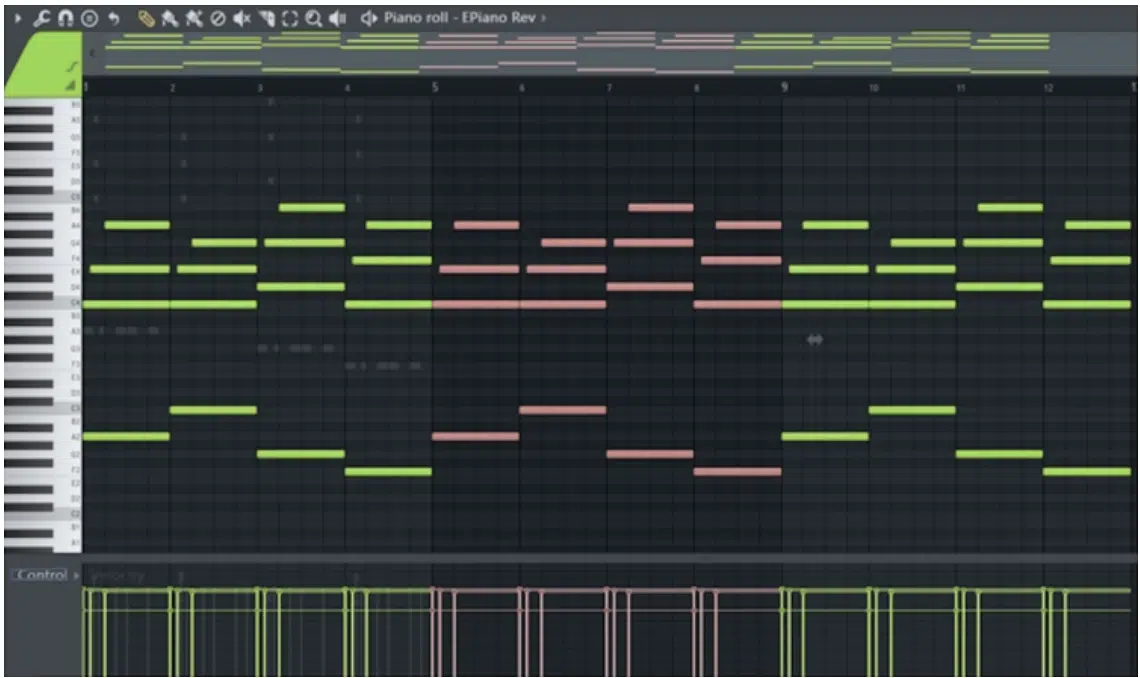
FL Studio’s Pitch Shifter
Pitch is what defines how high or low each note sounds in your melody.
When laying down your own melodies, try starting with a simple middle-range pitch for your verse (like C4 on your piano roll) to keep things neutral.
As you move into the chorus, you could raise the pitch an octave higher to give the section more energy — this subtle change can make your melody feel more dynamic.
If you’re working in a minor key and want a darker vibe, you can play around with lowering the third or seventh note in your scale.
This is super common in most European music and western music.
For example, shifting the third note down by a half step can instantly change the mood of your melody from bright to somber.
You can also adjust the pitch of individual notes based on how they interact with your bass line.
Lets say your bass is holding steady… Try adding a slight pitch bend or glide to your lead melody to create movement.
Just keep in mind that the key to creating great melodies is finding that balance between pitches that complement each other and those that introduce tension.
Rhythm in Melody: Timing and Flow
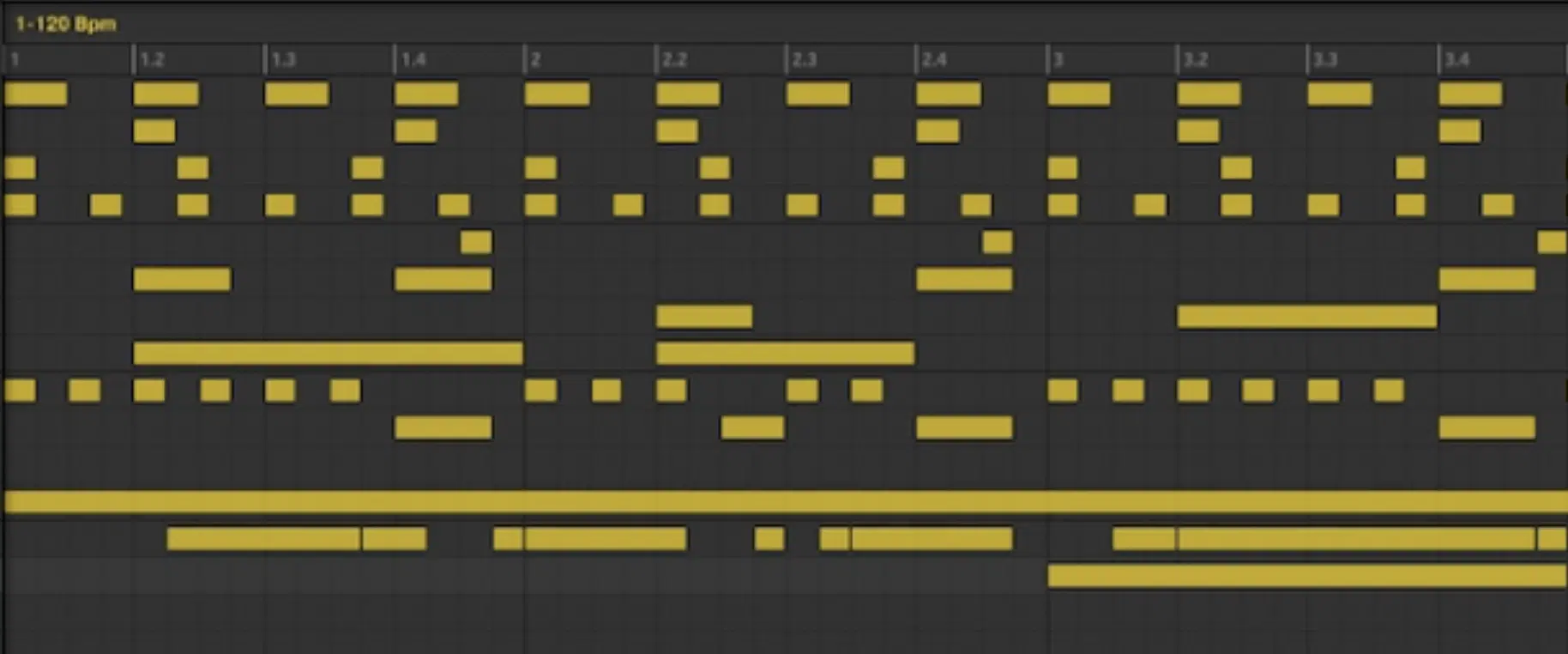
Cross Rhythms
Rhythm is all about when your notes hit and how long they last, which can change the entire feel of your melody.
To make your melody interesting, consider varying your note lengths.
For example, use shorter notes in the verses to create urgency and longer, sustained notes in the chorus to let the melody breathe.
When laying down a melody in your DAW, play around with the grid.
Start with a basic 4/4 rhythm, but don’t be afraid to introduce syncopation by placing two or more notes slightly off the beat to give it a more laid-back groove.
In popular music, you’ll hear producers often vary rhythms between sections to keep things fresh and interesting so people don’t forget it.
Try creating tension by letting a melody note hang over multiple beats, or even extend across how many bars you see fit.
If you’re working in hip-hop or trap, using triplet rhythms can add complexity and make your melody more rhythmic.
This will help it fit better with percussive elements like hi-hats and snares.
Pay attention to how your rhythm interacts with your chord progression or bassline to keep the melody in music locked into the groove.
Intervals in Melody: The Space Between Notes
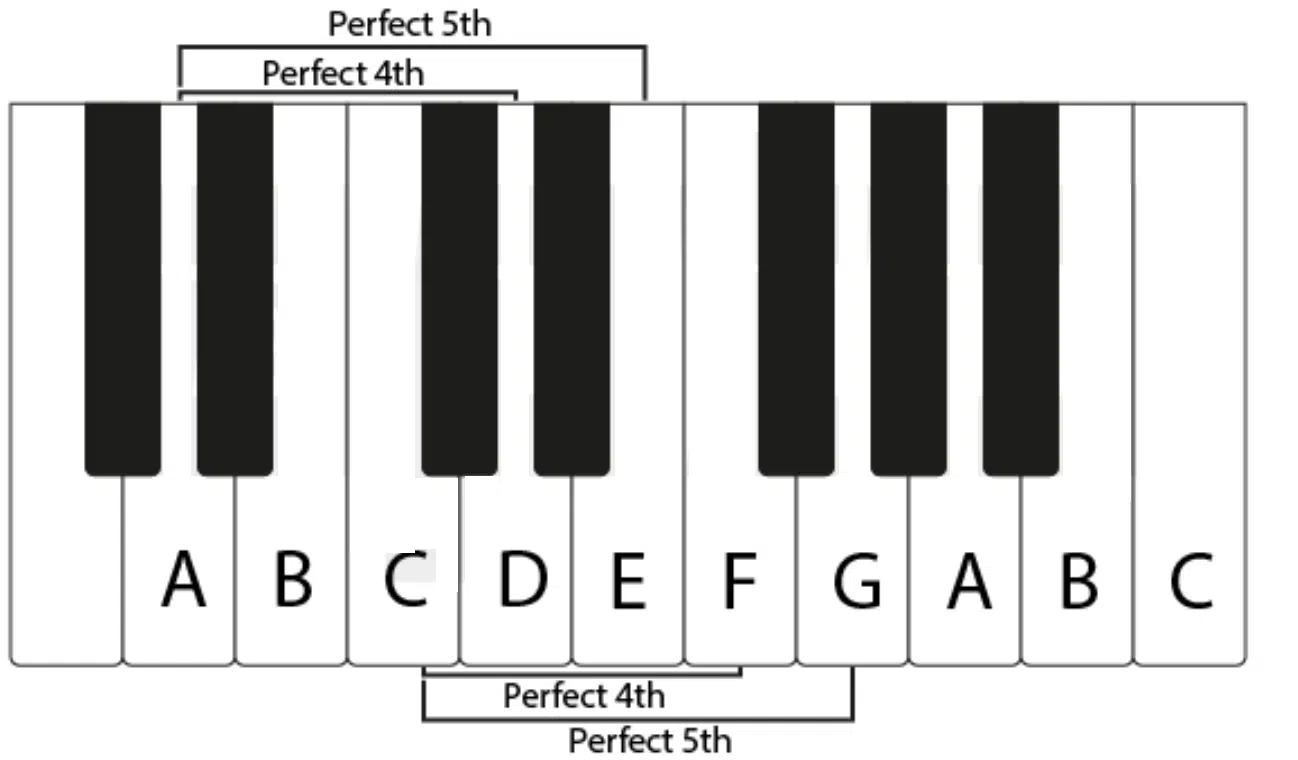
Perfect Intervals
Intervals are crucial when creating a melodic line because they define the space between your notes and give your melody its shape.
If you’re looking to create smooth, flowing melodies, stick to smaller intervals, like whole or half steps, which will give your melody in music a connected, cohesive feel.
For example, when working in a minor key, use stepwise motion to move between notes for a more relaxed and melodic sound.
On the other hand, if you want your melody to stand out, try larger intervals that you feel fit the vibe of your track, like fifths or octaves.
You can create a powerful lift by jumping from one pitch to another — a technique that’s used in pop music all the time to build that excitement in a chorus.
If you’re programming your melody into a piano roll, experiment with alternating between short intervals in the verses and larger jumps in the chorus.
This contrast will keep your melody fresh and engaging.
Pay attention to how different intervals affect the emotional impact of your melody (smaller intervals feel smoother, while larger ones can make your melody in music more dramatic and bold).
Different Types of Melodies
Melodies can serve different purposes in a song, depending on their role and instrumentation. They come in all different forms. So, let’s break down some common types of melodies and how they function so you can understand what is melody.
-
Vocal Melodies vs Instrumental Melodies
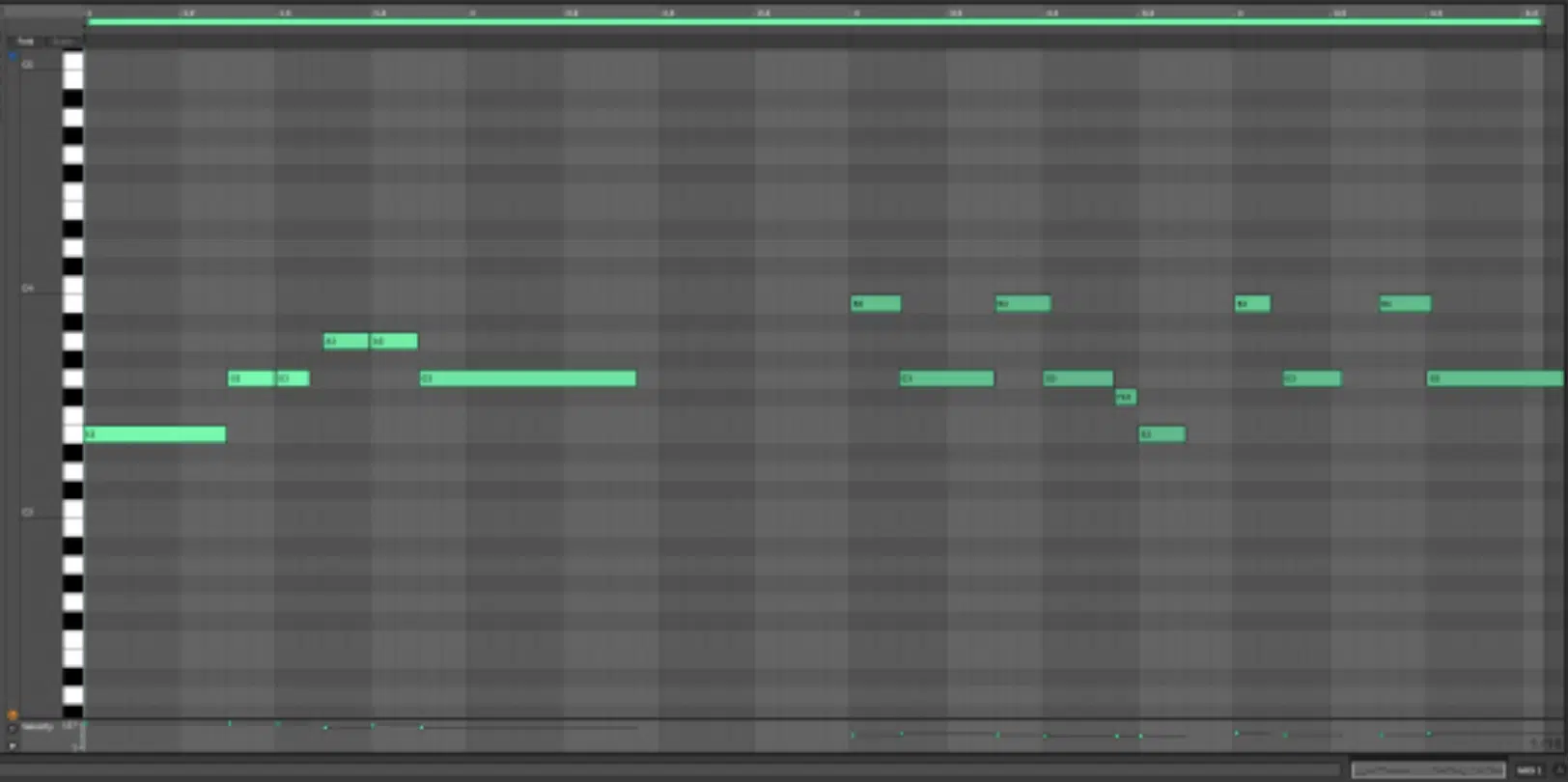
Vocal Melody
Vocal melodies and instrumental melodies serve different functions, but the principles behind them are pretty similar usually.
When creating vocal melodies, you need to focus on the natural range and rhythm of the human voice as a whole.
For example, keep the vocal line within a comfortable range that can be sung consistently, especially in pop music, where catchy hooks are key.
If you’re laying down a vocal melody, try recording a rough idea using your voice or a MIDI controller and adjust the notes to fit the vocal range.
For instrumental melodies, you have more flexibility in terms of pitch and rhythm because you’re not bound by the human voice.
You can experiment with:
This will help you create melodies that weave through the track without needing to consider breath control or vocal phrasing.
In both cases, make sure your melody fits well with the harmony and structure of the song, whether you’re leading with vocals or an instrument.
-
Lead Melodies and Supporting Melodies
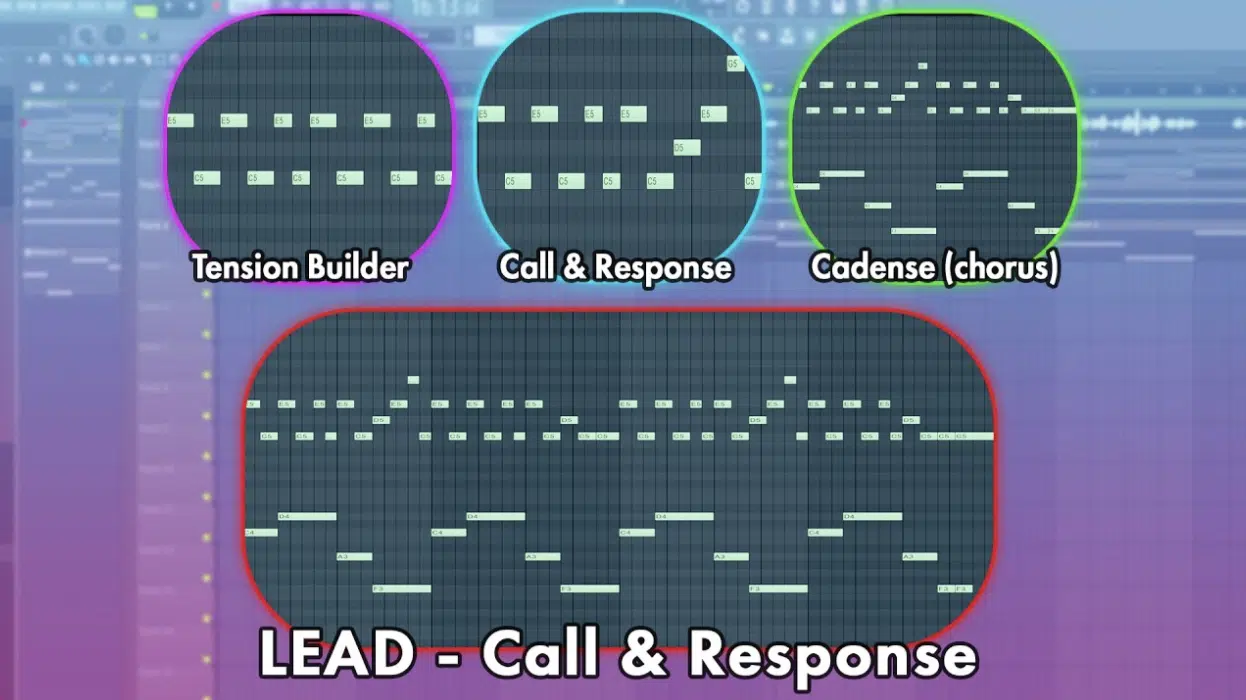
In this modern production world we live in, a track often features a lead melody that grabs attention and supporting melodies that enhance it.
A lead melody usually sits at the forefront of the mix, cutting through the bass line and all the elements (basic elements) which listeners remember most.
For example, you can use a strong synth line as your lead melody in electronic music, but it’s important to pair it with supporting melodies to fill out the sonic space.
Supporting melodies often sit lower in the mix, providing harmonic or rhythmic support without stealing focus from the lead, which you don’t want.
Think of them like backup singers or secondary instruments that complement the main melodic line.
When laying down your own melodies, try creating a lead line using a bright synth patch or vocal music sample, and then layer subtle supporting melodies underneath it.
You could possibly use a pad or plucked instrument 一 dealer’s choice.
This technique will make your arrangement feel fuller and more polished, plus help you understand what is melody as a whole.
-
Monophonic vs Polyphonic Melodies
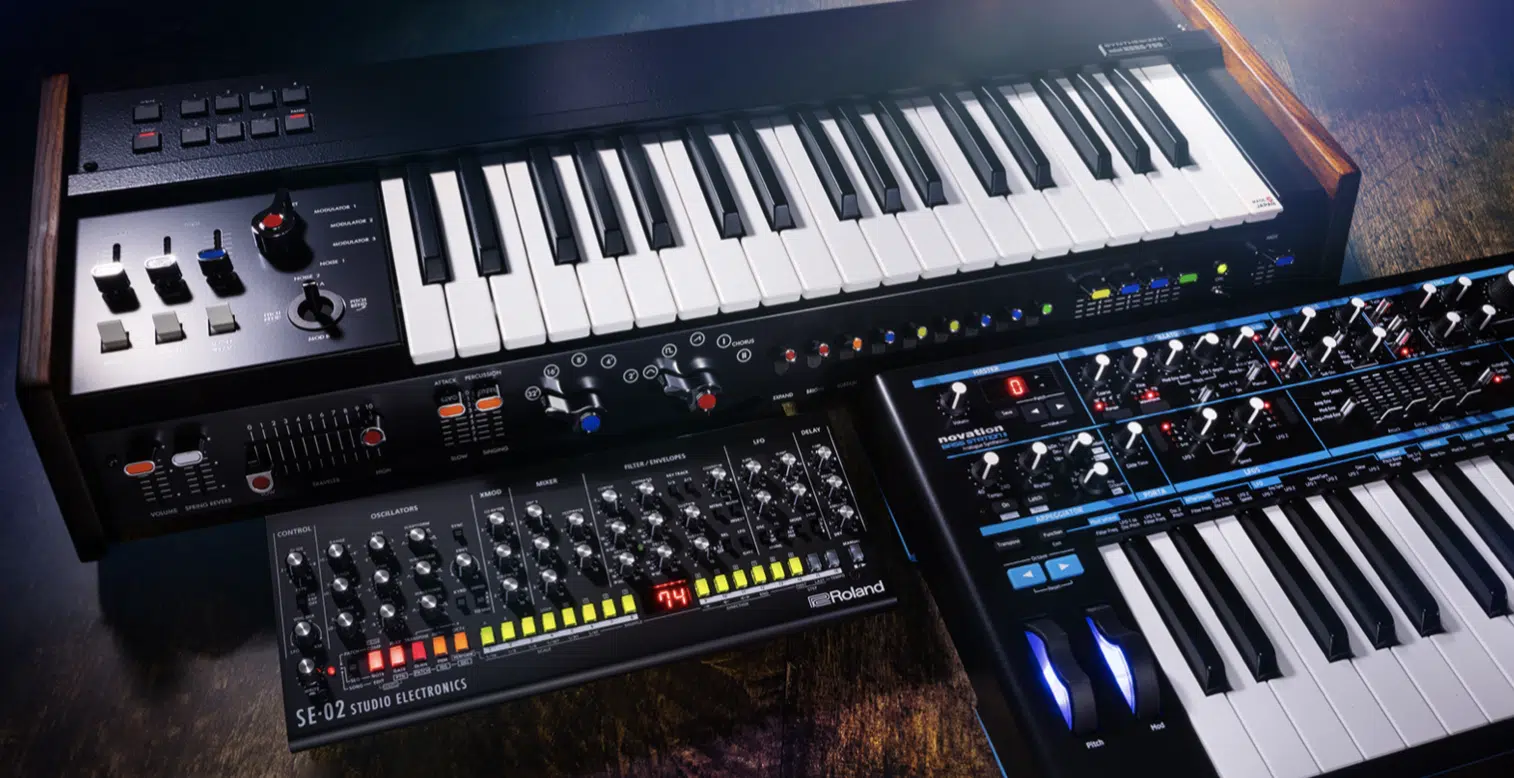
Monophonic and polyphonic melodies offer different creative possibilities in production.
A monophonic melody in music consists of only one note playing at a time, which is great for clear, focused lines.
For instance, when using a lead synth in your DAW, setting it to monophonic mode will make sure that only one note plays at any given time.
It gives the good melody in music more punch and clarity (ideal for bass lines or simple lead melodies that need to stand out).
Polyphonic melodies, on the other hand, allow multiple notes to be played simultaneously, opening up opportunities for creating hypnotic chords or harmonized melodies.
If you’re working with synth pads or orchestral strings, polyphony can help you build professional, layered textures.
When designing your own melodies, experiment with switching between monophonic for your leads and polyphonic for your harmonic layers to add more depth and variation.
Melodic Motion: How Melodies Move
The movement of a melody, known as melodic motion, plays a major role in how engaging and memorable it feels. Let’s break down the different ways melodies can move and how you can use these techniques in your own tracks. Everything we’re covering will help you understand what is melody, so just stick with me.
-
Stepwise Motion vs Leaps in Melodies

Stepwise Melody (right = correct)
Melodies can move either stepwise (by small intervals) or by leaps (larger intervals), and each type of motion affects the energy and mood of your track.
Stepwise motion involves moving from one note to the next adjacent note, like when you’re playing the white keys (not the black keys) on a piano in sequence.
Side note, if you want to learn about the most versatile music notation, we got you covered with our rests article.
This creates a smooth, flowing feel, ideal for building a cohesive melodic line in genres like pop music or ballads (or some hybrid genres).
If you’re trying to create a more emotional or intimate melody, stepwise motion can help you keep things connected.
On the other hand, leaps in melodies, where you skip over notes in the scale, introduce more tension and excitement.
For example, if you’re producing an EDM track, using larger intervals like fifths or octaves in your lead melody can give the song a more energetic, impactful feel.
NOTE: A good technique is to combine both stepwise motion and leaps. Start with stepwise movement in the verse to create a calm vibe, then use leaps in the chorus for a big, memorable hook.
-
Ascending vs Descending Melodic Lines
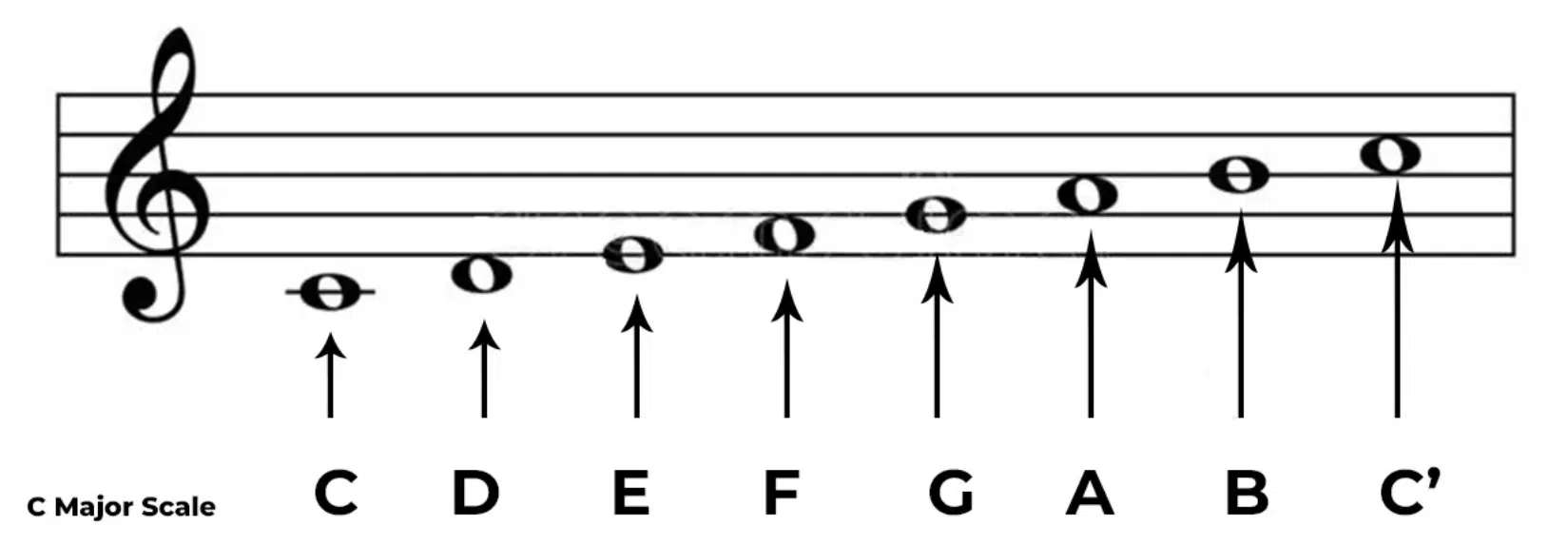
C Major Ascending
Whether your melody ascends or descends will drastically change the emotional impact of the song, hands down.
Ascending melodic lines, where the notes rise in pitch, naturally create a feeling of build-up or anticipation, which is great for:
- Intros
- Pre-choruses
- Gradually increase the energy of your track
For example, try starting your melody low in the range of your instrument and let it ascend as the section progresses.
This works well in genres like popular music when you’re aiming for a dramatic rise into the chorus which really captivates your listeners.
Descending melodic lines, where the notes drop in pitch, have the opposite effect and often create a feeling of resolution or melancholy.
If you’re closing out a section, like an outro or a breakdown, descending lines can make the melody in music feel more grounded.
NOTE: When producing is to use ascending lines for moments of tension and excitement, and descending lines for moments of emotional release or conclusion.
How to Create Catchy Melodies
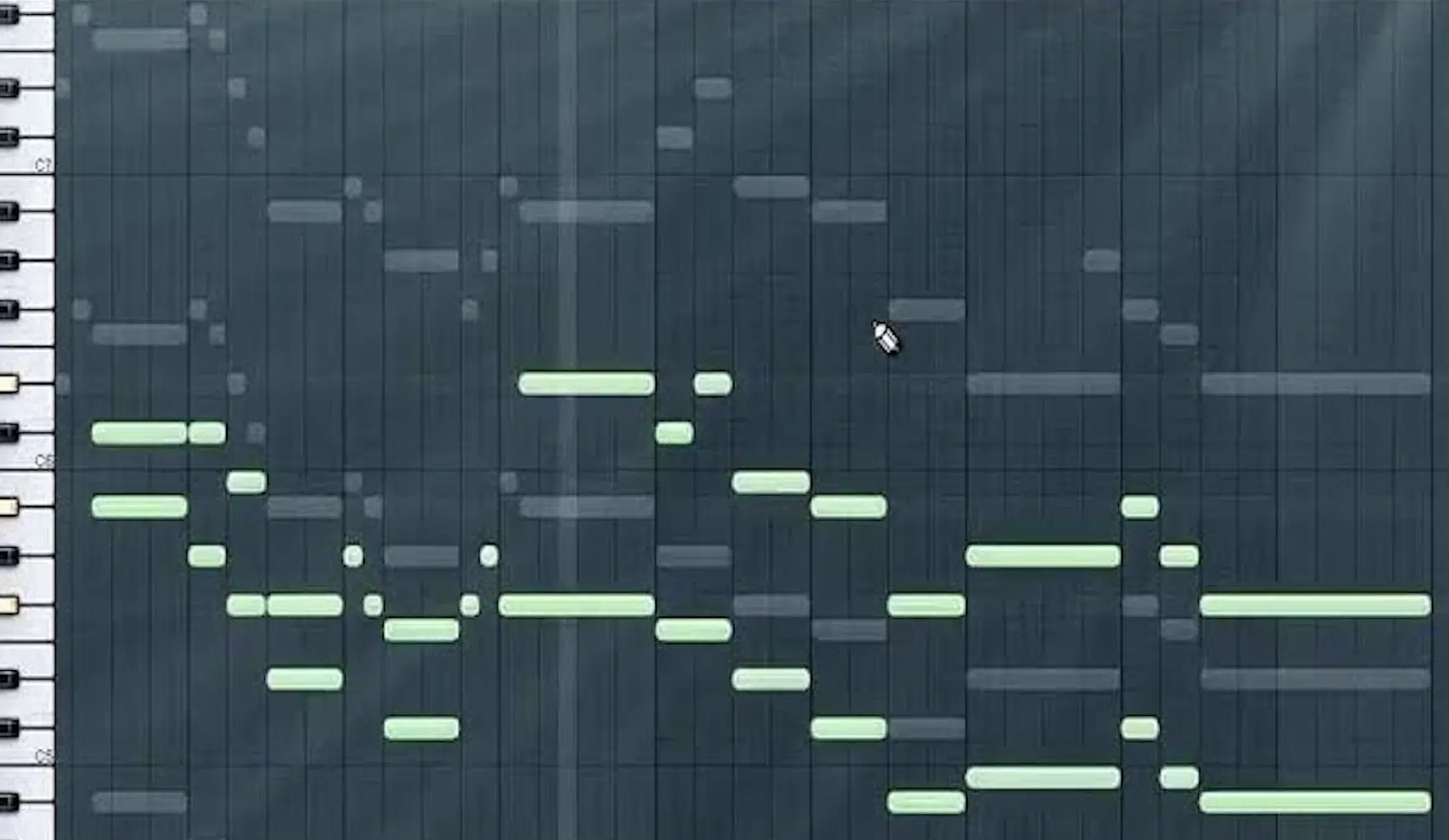
Sad Melody
Creating a catchy melody is one of the most important skills in modern music production that can really set your tracks apart and dominate the competition.
To make your melody memorable, start with simplicity… Focus on a short, repeatable melodic phrase that can be easily recognized and hummed.
For example, create a simple 4-bar melody using a scale like the pentatonic scale or major scale.
These are often used in popular music because your listener perceives it easily and they can follow along with no problem.
Once you have a basic melody, experiment with repeating it but adding small variations, like changing the rhythm or pitch of certain notes.
This technique keeps the melody familiar but also interesting.
You can also layer your melody with harmonic elements or a bass line to make it stand out more in the mix.
Pay close attention to your rhythm; sometimes, shifting a note heads slightly off the beat or using syncopation can make your melody in music more dynamic and engaging.
Finally, don’t be afraid to tweak your melody by trial and error 一 sometimes the catchiest ideas come from small changes.
Melodic Contour: Shape and Emotion
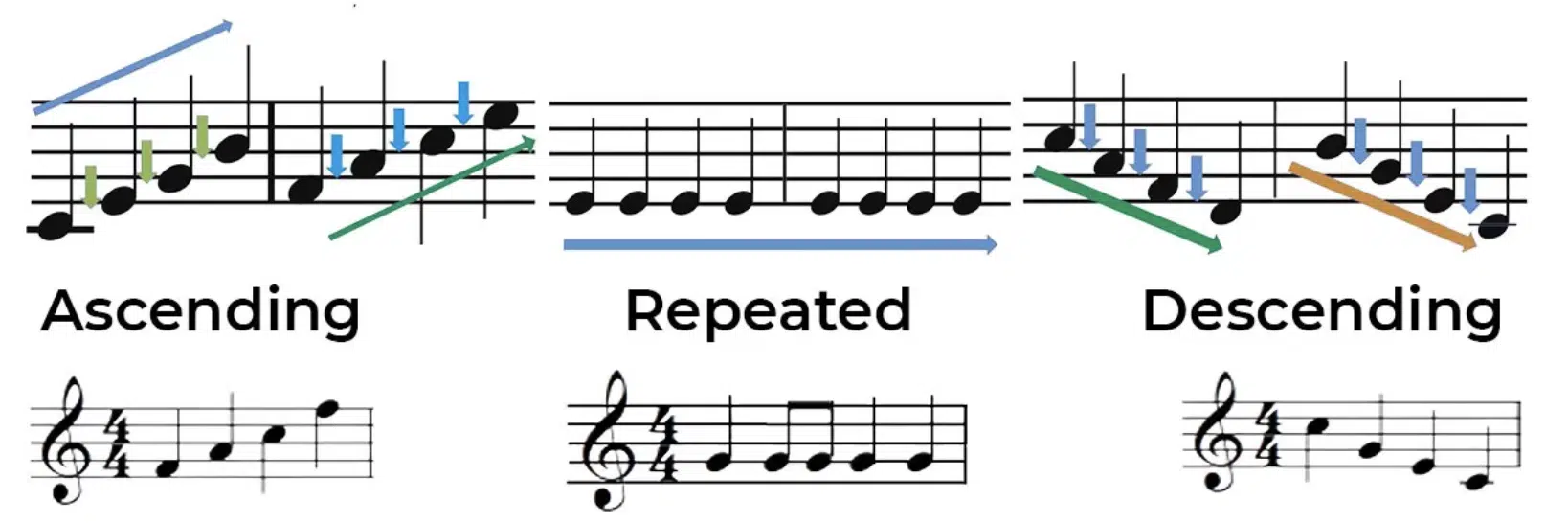
Melodic contour refers to the shape of a melody, which is defined by the pattern of pitches that rise and fall throughout the melodic phrase (short phrase/longer phrase).
The shape of your melody can evoke different emotions in the listener.
A melody in music with a rising contour will create a sense of building energy or optimism, perfect for an uplifting pop song or a high-energy EDM track.
On the other hand, a melody with a falling contour can feel more introspective or somber, which is useful when creating vocal melodies for emotional ballads.
You can also use a wavelike contour, where the melody rises and falls repeatedly, to create a sense of balance and flow.
When producing your own melodies, take the time to map out the overall shape by plotting your pitches on a piano roll or staff.
Try visualizing how the melody will move through the song.
If your melody feels flat, try introducing a rise or fall in key sections, like the chorus or bridge, to give it more emotional impact.
The Relationship Between Melody and Harmony (+ Tips About What is Melody)
Melody and harmony work together to form the backbone of any track. Understanding how harmony can support or enhance a melody is key to creating great melodies that stand out. So, for our last section, let’s explore how harmony and chords interact with melody and how you can apply this to your own production.
-
How Chords and Harmony Affect Melody
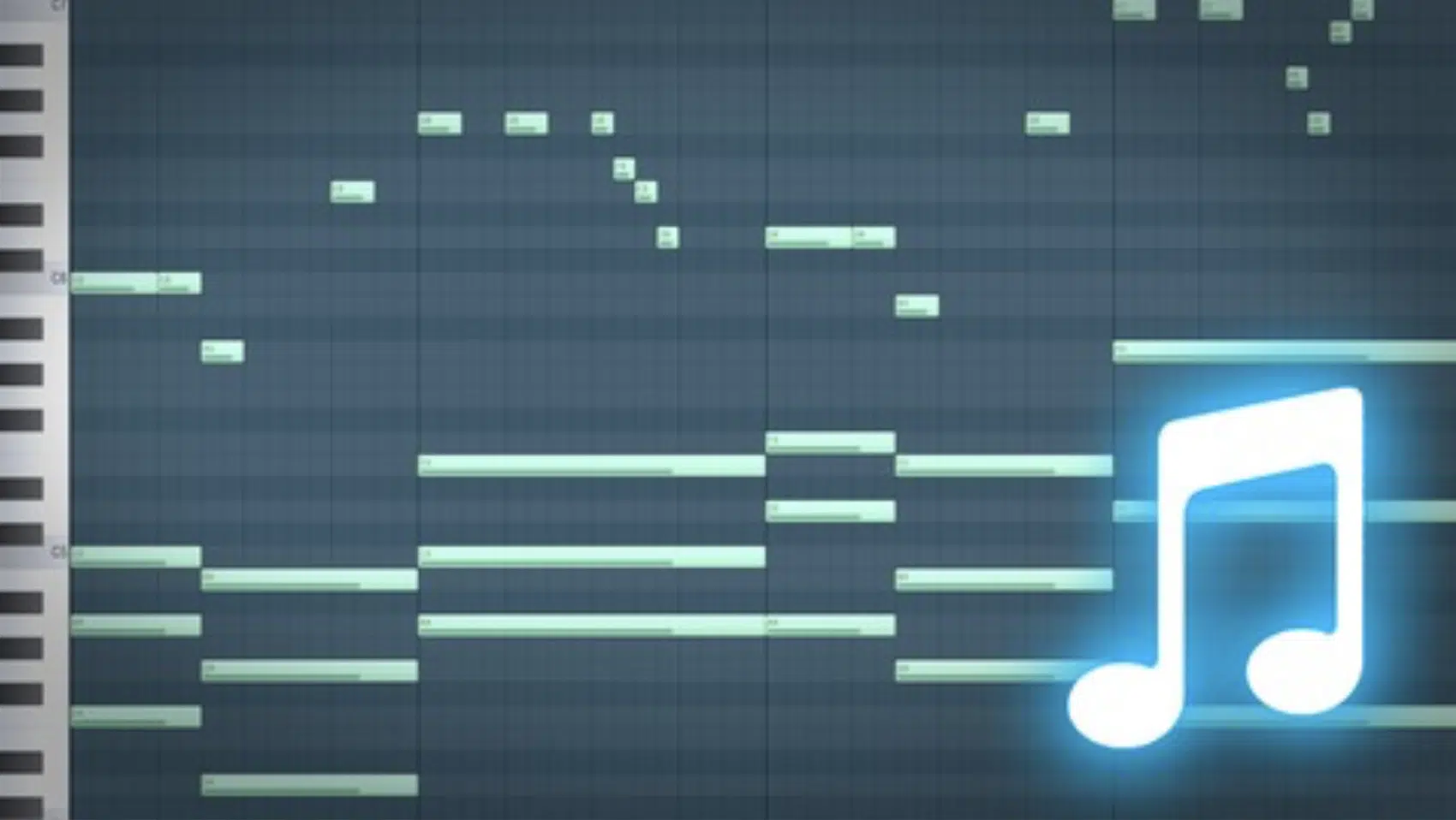
Chords and harmony give context to your melody, creating the emotional and musical foundation underneath it.
When you’re laying down a melody, pay close attention to the chord progression.
For example, if you’re working with a simple I-IV-V progression in a major key, your melody will feel bright and uplifting if it highlights the chord/musical tones (like the root, third, or fifth of each chord).
On the other hand, if you’re in a minor key and using a progression like i-VI-iv, the melody will have a more melancholic or reflective tone.
A good tip when producing is to experiment with melody changes that emphasize the notes that differ between chords which can make your melody feel more connected to the harmony.
Another great example is using tension and release…
Try moving your melody outside of the chord tones (like using a 7th or 9th note), and then resolving it back into the harmony for emotional impact.
-
Creating Harmonized Melodies: Key Considerations
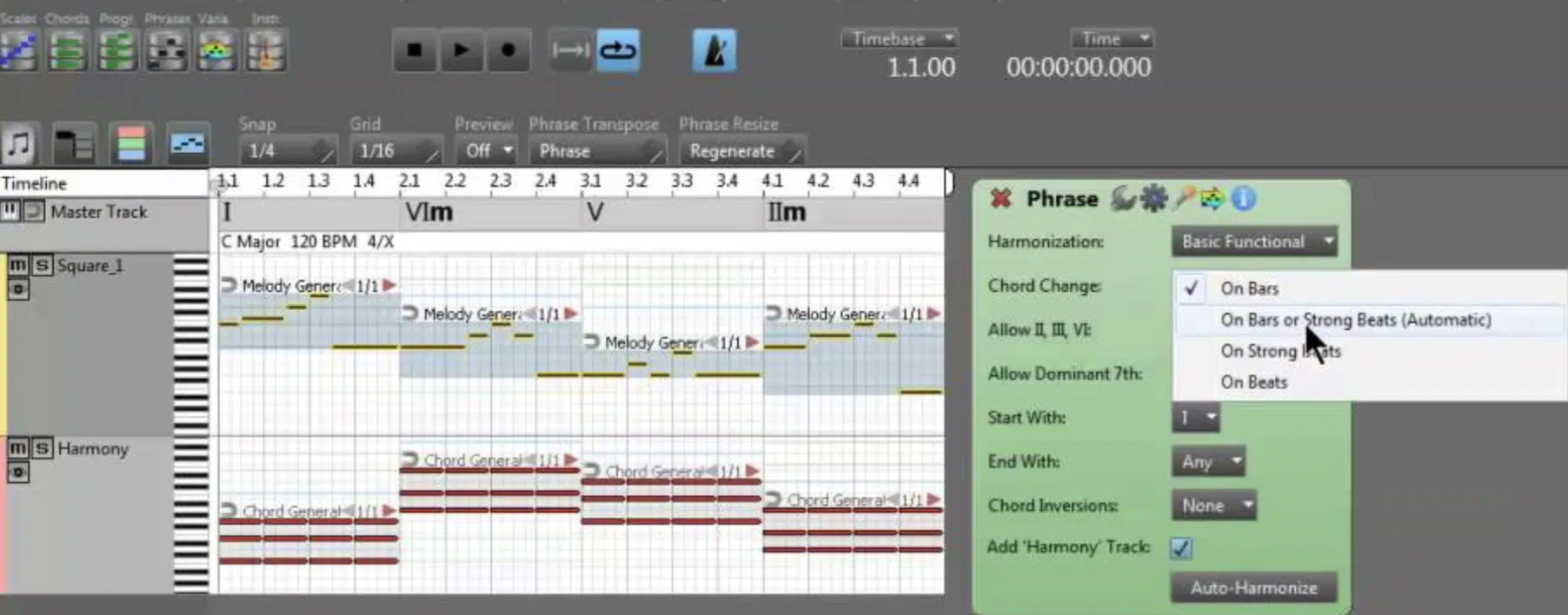
Harmonizing a melody involves adding notes that complement the original line 一 enhancing its depth and richness.
A common technique is to harmonize by thirds or sixths 一 for good example, if your melody starts on C, you can add an E or an A above it to create a pleasing harmony.
When producing, consider how harmonized (beautiful) melodies can support the emotional tone of your track.
For example, in a pop song, harmonizing the chorus can make it sound fuller and more powerful.
Be careful not to overcomplicate the harmony because too many harmonized lines can clutter your mix and make things sound sloppy.
When harmonizing, ensure that the secondary melodic line doesn’t overpower the lead, keeping the main melody as the focal point.
A helpful tip is to automate volume or pan the harmonized melody slightly off-center to give your track more space and dimension.
NOTE: Make sure your harmonized melodies align rhythmically with the main melody to keep things super fluid and put together.
-
Melodic Layering in Production
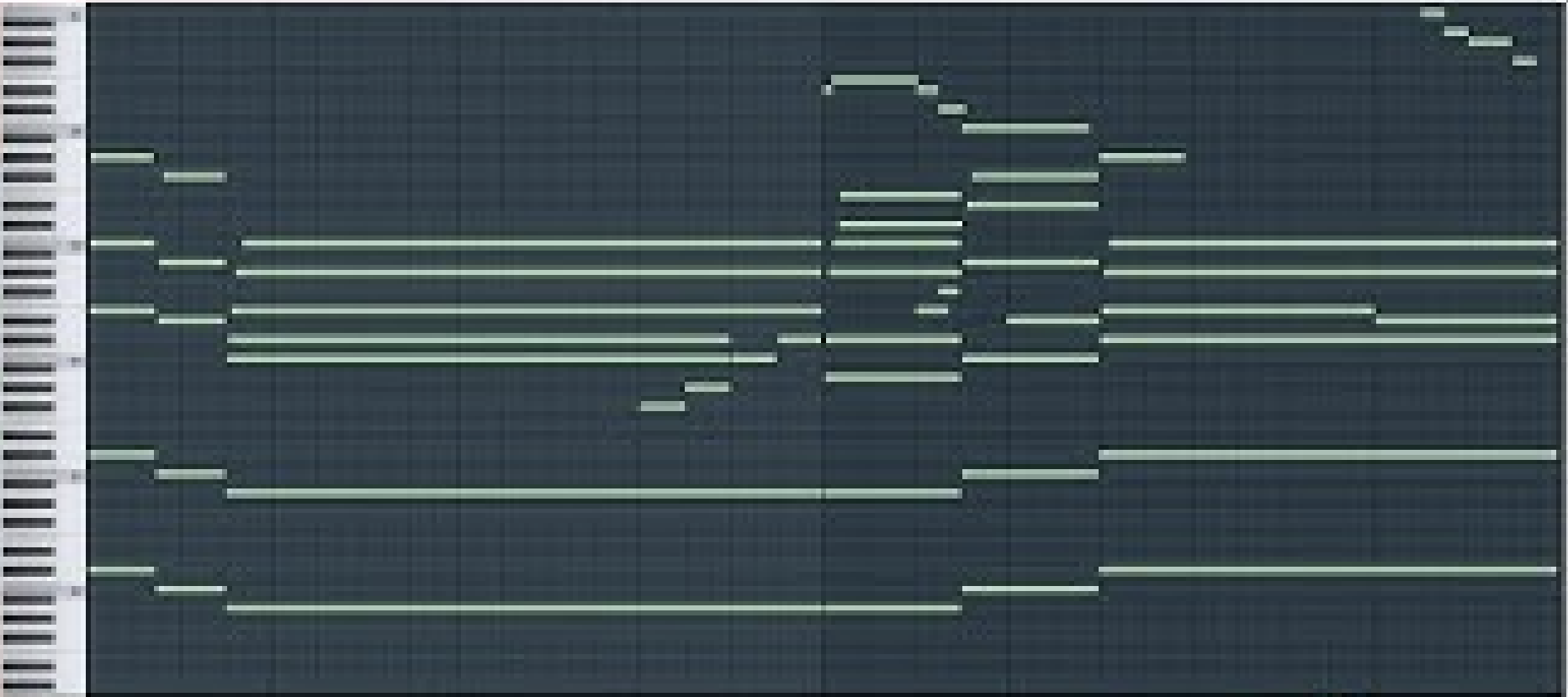
Layering melodies is a powerful way to add complexity and texture to your production.
A simple technique is to double your lead melody with a different instrument…
For example, if your lead melody is played by a synth, layer it with a piano or a plucked instrument to give it a different tonal quality.
When it comes to melodic layering, make sure the timbres of the two instruments complement each other instead of clash (which you never want).
You can also create subtle variations in each layer by slightly adjusting the:
- Pitch
- Rhythm
- Even the key signature
For example, duplicating a melody and shifting it up an octave adds brightness, while lowering a copy adds warmth and depth.
A good example of this is layering a high lead synth with a lower, more bass-heavy instrument to cover the full frequency spectrum.
Another good tip is to use delay or reverb on one layer while keeping the other dry, which can make the layers feel more dynamic without overpowering the mix.
-
Countermelody: Adding Depth to Your Tracks
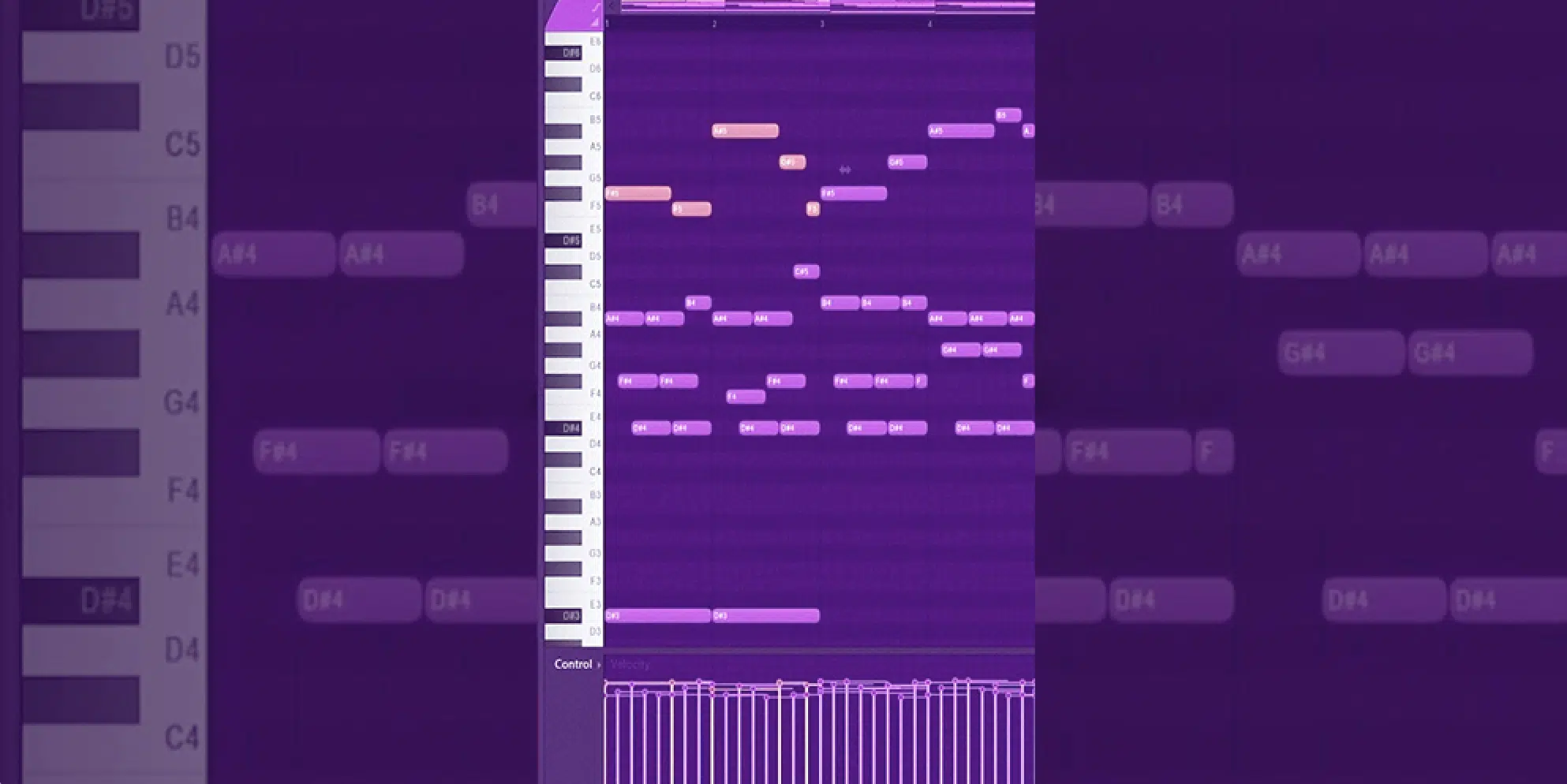
A countermelody is a secondary melody that plays alongside the main melody to add more depth and complexity to your track.
While the main melody carries the central theme, the countermelody can introduce contrast or harmony that enriches the arrangement.
When you’re laying down a countermelody, think about how it complements the main line without dominating it.
For example, if your primary melody is flowing with stepwise motion, try using leaps or rhythmic syncopation in your countermelody to create contrast.
This what is melody technique can make both lines stand out more.
When producing, you can assign the countermelody to a different instrument or register, like a lower synth or even strings, to avoid conflict with the lead melody.
NOTE: Keep your countermelody simpler than your beautiful melody (main) so it enhances the track without becoming too busy.
What is Melody: Final Thoughts
When learning what is melody in music, it can be a little tricky at first.
However, with all the information, tips, tricks, techniques, and examples we broke down today, you’ll be able to lay down sick melodies in no time.
Whether it’s laying down catchy vocal melodies or layering instrumental lines, you’ll be able to produce professional-quality melodies that stand out in any track.
Plus, use harmony, countermelodies, and melodic development to create even more depth and edge in your music.
If you really want to check out what the most epic melodies in the game sound like, you’ve got to check out the completely Free MIDI Melodies Pack.
It contains over 300 expertly-created MIDI melodies that are ready to drop straight into your DAW and tweaked however you want it.
From catchy pop hooks to emotional minor-key lines, these melodies are designed to fit all genres and production styles/vibes.
Using this pack can save you tons of time, spark creative ideas, and help you produce melodies that are just as sick as what you’d hear in top-charting tracks.
With these tools and insights, you’re ready to take your melody-making skills to the next level and dominate the competition.
Just keep experimenting, trust your creative instincts, and soon enough, creating epic, show-stopping melodies will be second nature.
Until next time…







Leave a Reply
You must belogged in to post a comment.